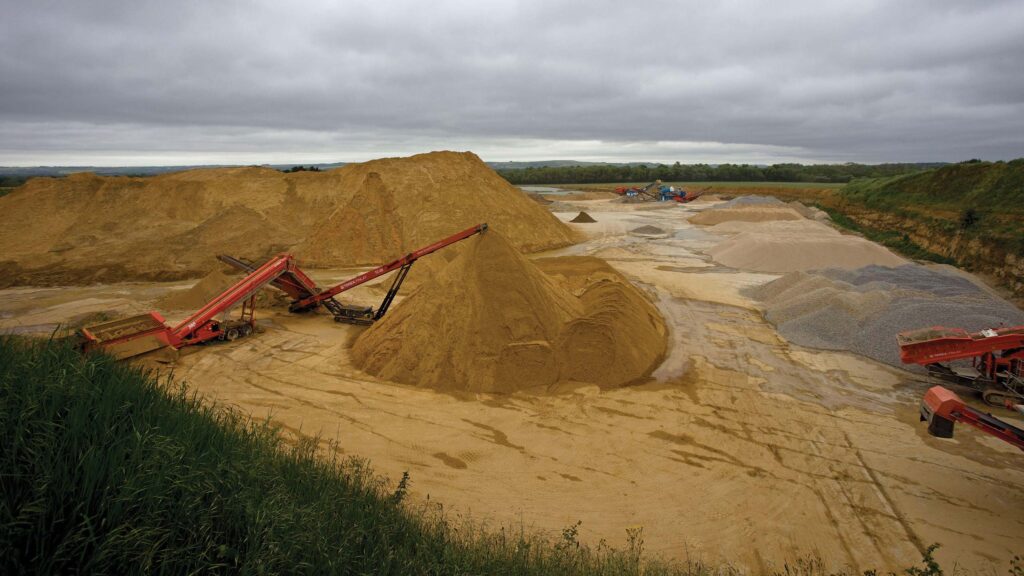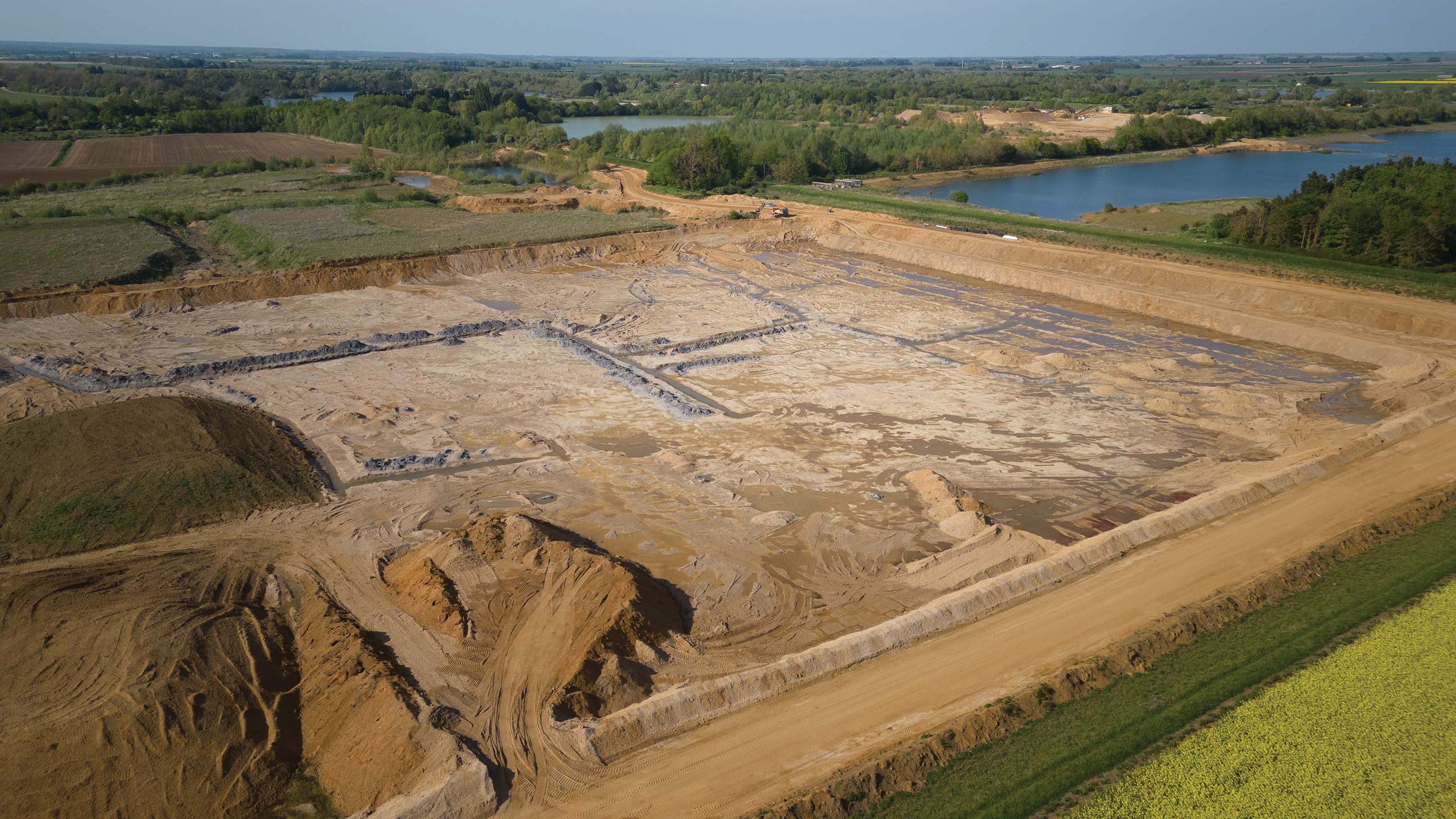Why housebuilding plans may bring minerals opportunities
 © Tom Viggars/Alamy Stock Photo
© Tom Viggars/Alamy Stock Photo In a typical year the UK uses about 250m tonnes of aggregates, with about 28% of this sourced from recycled or secondary materials, a supply which has grown significantly in recent years.
The main volume is from primary sources quarried from land or dredged from the seabed, with construction using about 90% of all aggregates.
See also: Clean power push brings grid reform and shifts site demand
Despite the government’s housing targets and infrastructure plans, demand for aggregates has not picked up significantly, say advisers.
The National Planning Policy Framework requires all mineral planning authorities (MPAs), usually county councils, to grant planning permissions in order to provide a steady and sufficient supply of minerals to meet demand and maintain reserves.

© Tim Scrivener
The numbers
168.3m tonnes of primary aggregates produced in Great Britain in 2022, comprising:
116.2m tonnes of crushed rock
52.1m tonnes of sand and gravel
Outdated plans
However, MPAs produce a local plan only every 10-15 years, and so there is often a mismatch between what these plans set out and changes in demand for minerals.
This is important now, as most of the current plans were written before the 2024 general election and its accompanying housing targets.
Achieving planning permission for mineral extraction is challenging, with permissions granted being well short of demand, says Stuart Jeffries, director of minerals and waste management with Savills.
Sand and gravel applications are being granted at about 60% of the rate of use, with crushed rock at 30%.
Mineral extraction is a long-term process, not only in the quarrying or extraction itself but also in achieving planning permission, which typically takes anywhere from two to five years from the start of the process, and preparing a site, he says.
Sand and gravel extraction may go on for 10-15 years and sometimes significantly longer, while rock quarrying is more likely to run over at least 20 to 30 years.
Early August saw the publication of the Aggregate Minerals Survey by the British Geological Survey for the Ministry of Housing, Communities & Local Government.
This assesses national aggregates supply and demand to inform minerals planning policy.
The survey shows that permitted aggregates reserves in Great Britain fell by 46% between 2001 and 2023.
The opportunities
Initially, landowners may be approached by mineral operators seeking an exclusive licence to survey their land, which involves drilling test holes, says Stuart.
Once the results of these tests have been analysed, the information is shared with the landowner and, if positive, the operator starts the planning application process, having agreed the necessary rights with the landowner.
The agreement with the landowner will set out the rent, royalties, restoration and other operational matters and this becomes effective on grant of planning permission.
The cost of achieving mineral planning permission is huge, with the mineral operator taking the lead and carrying the risk on this, says Stuart.
He warns that it could be a 5-10 year wait before the landowner receives any rental income, but says: “Even if you’ve looked into mineral extraction before, it’s worth reconsidering because the supply chain has changed. What might not have been viable then could be much more viable now because extraction and processing techniques have also improved.”

© Tim Scrivener
Spin-off potential
Think also about opportunities off the back of the minerals operation, suggests Stuart. For example, could the extraction create an opportunity for some sort of development such as filling the void with clean, inert material, potentially creating a development platform for a farm building or other use.
Like all businesses, developers and mineral operators seek sustainability benefits.
For example, a minerals operation may form an early part of a wider development scheme, says Stuart, with the minerals worked being used in the development, while the soils stripped to allow the development can be tipped into the void created by the mineral extraction.
Also, there may be other alternatives for the land where the extraction takes place, for example, such as leisure uses, fishing or water sports.
Landfill tax changes
The government is proposing reforms to the landfill tax, on which a consultation recently ended.
This seeks to remove a number of important exemptions and transition to a single-rate structure away from a two-tier system, says the Country Land and Business Association (CLA).
It fears this could give rise to a dramatic increase in the tax rate, with the increased costs making certain businesses, minerals projects and environmental restoration work unviable.
CLA Midlands rural surveyor John Greenshields says: “This will directly impact the strategically critical minerals industry, an industry that is vital if the government wishes to deliver its growth, housing, infrastructure and net-zero plans.”
If higher landfill taxes and the loss of exemptions mean funds are not available for restoration, the liability for this then potentially falls on the landowner or occupier.
The organisation also fears that the proposed increases in landfill tax will lead to more industrial-scale fly-tipping.
Legal aspects for landowners
It is not uncommon, especially in certain areas such as Cornwall and north-east England, for mineral rights to be separated from the land and under third-party ownership.
Where mineral rights are owned and extraction is a possibility, there are many issues to consider, says Simon Trahair-Davies, a partner in the specialist mines and minerals team of South West-based law firm Stephens Scown.
These include:
- Biodiversity net gain (BNG) Mineral workings need to provide BNG to offset any habitat damage and replace it with 110% of the baseline habitat. “Make sure any legal agreement with the operator caters for this and how it is to be dealt with,” says Simon. “This may present an additional opportunity for the landowner, for example in creating the habitat units needed, for an additional payment.”
- Planning process “Ensure you as the landowner have some input into the planning process – ideally final approval, but failing that prior consultation – especially regarding restoration of the site, and the possibility of the mineral extraction being combined with restoration that enables subsequent development.”
- Operator financial security “Check that the operator is good for what they are committing to – you need to be sure that in 20 or more years’ time, the funds will be there for restoration of the site, as the liability will fall on the landowner if the operator is no longer in business. This can be handled through a range of mechanisms including an escrow account or a bond.”
- Rent and royalty reviews If and when extraction begins, the landowner will normally receive a minimum annual payment in the form of a “certain rent”, with royalty payments based on the volume of working at the site. Regular reviews of payments to landowners should be undertaken (via either periodic market or index reviews) as well as ensuring there are agreed payments for all the possible activities on site, such as recycling, infilling and importing materials for processing.
- Landfill tax changes Be aware of the potential impact of the current two rates reducing to one, substantially increasing the tax on inert material and challenging the viability of some projects.
Wide range of uses for aggregates
An end-product in their own right, aggregates are also used to manufacture other construction products such as ready-mixed concrete and concrete products, asphalt, lime and mortar, as well as a wide variety of other products ranging from fertiliser and glass to toothpaste.
The main uses are in roads, railway and housing construction, as well as other infrastructure such as schools, hospitals and reservoirs.
Primary aggregates are available in most parts of the UK, but with costs often doubling for each 30 miles travelled, use is kept as local as possible.
The main products are crushed rock, of which there are three main types, and sand and gravel.
Sand and gravel deposits are generally shallow, often less than 5m or 6m, and quarrying operations are likely to be shorter term than for a rock quarry, with progressive restoration normally following closely behind extraction.
Sand and gravel can also be dredged from licensed areas in coastal waters.
Source: Mineral Products Association
